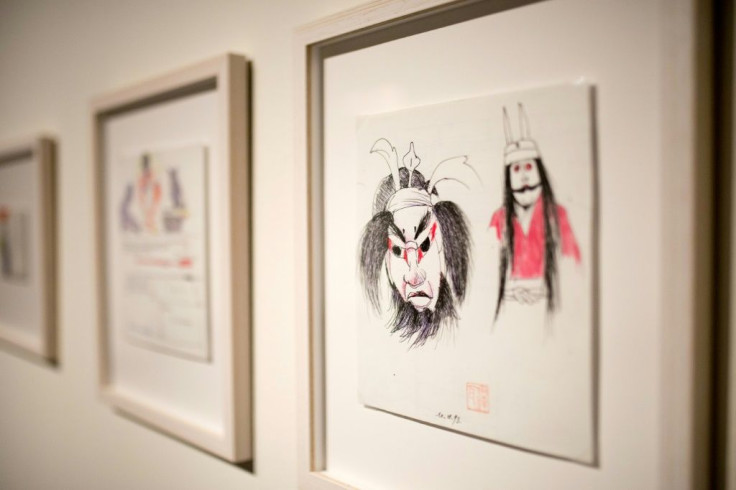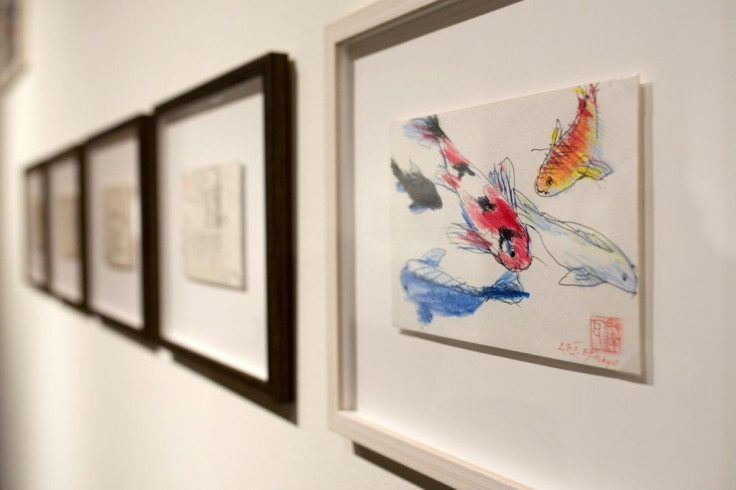Japan Drawings Reveal Little Known Side Of Polish Director Wajda

A new exhibition shows a little known side of the late Andrzej Wajda, who was not only an Oscar-winning Polish film and theatre director but also a lifelong visual artist with a love of Japan.
More than 100 sketches from his trips to Japan are on display until March 6 in the southern city of Krakow at the Manggha Museum of Japanese Art and Technology, which he founded with his wife a quarter century ago.
Wajda, who died in 2016, is known as a Man of Poland for an opus of films inspired by his country's turbulent history, but he was "first and foremost a person very interested in the world", his widow Krystyna Zachwatowicz-Wajda, 89, told AFP.
The "Japanese Notebook" exhibition shows his quick but harmonious drawings of temples, castles, sumo wrestlers, koi fish, kabuki theatre actors, gardens, cherry-blossom trees -- all that fascinated him.
He mostly worked in pen but sometimes jazzed up the sketches with watercolour or expressive strokes of vibrant yellow, red and blue crayons. For a signature, he used his red Japanese name stamp.
Wajda's first love was painting. He said dreaming of art school is what got him through World War II. Once there, he completed several paintings in a surrealist, abstract style.
But he switched gears when he saw a canvas by his good friend Andrzej Wroblewski depicting wartime civilian executions.
"He understood that it was a closed avenue for him, since someone had already painted what he should have," Zachwatowicz-Wajda said.
He went into film but never stopped drawing, documenting his everyday life with a pen instead of a camera and sketching scenes he wanted to shoot.
"Whenever I don't draw for several days in a row, I forget everything," Wajda wrote in a sketchbook.
"I go back to the natural state of stupor which consists of using the faculty of sight only to the extent required to avoid stumbling or banging my head when getting into a car."

He first visited Japan in 1970 to promote Polish culture at the World Exposition, where he noted in a sketchbook that there were "5,000,000 visitors, 1 pickpocket".
Wajda identified with the Japanese, saying: "They have all those traits that I have been trying to develop and nurture in myself all my life: seriousness, a sense of responsibility and honour, and also the need for tradition."
There was a universality to his films that also struck a chord in Japan, where men would don black shades and military jackets to copy the look of the protagonist of Wajda's 1958 classic "Ashes and Diamonds".
Japan identified with the tragic hero, a resistance fighter ordered to assassinate a communist official, because he "is a man of honour and dies for his cause," according to Zachwatowicz-Wajda.
She cites the true story of the 47 Ronin, a group of samurai who avenge their master's death before committing ritual suicide.
The couple visited the temple where the group is buried and Wajda drew the graves.
In 1987, he won the Kyoto Prize, often called the Japanese Nobel, and the Wajdas put the funds towards building the Manggha Museum.
Wajda then won an Oscar for his life's work in 2000.
Wajda was well acquainted with Japanese ukiyo-e woodblock prints, which he first saw as a teenager during the war, and that influence is visible in the exhibition in the solid colours and novel use of perspective and composition.
His sketches of the Great Buddha of Kamakura show the giant bronze statue from the back, revealing the windows that filter sunlight into its hollow insides.
"It's an unexpected take. The Buddha is usually shown straight on in images, but he showed him from a completely different angle," exhibition co-curator Anna Krol told AFP.
Other scenes feature slanted marks depicting falling rain -- smeared in one case by actual raindrops -- in the style of the Japanese master Katsushika Hokusai.
The drawings also show Wajda's "incredibly open eyes", an acquaintance, painter Jacek Waltos, told AFP.
"That sense of: I look and the world is interesting. That whenever, wherever, I pull out my sketchbook and draw. That the world is worth recording," said Waltos, 81.
© Copyright AFP 2024. All rights reserved.





















